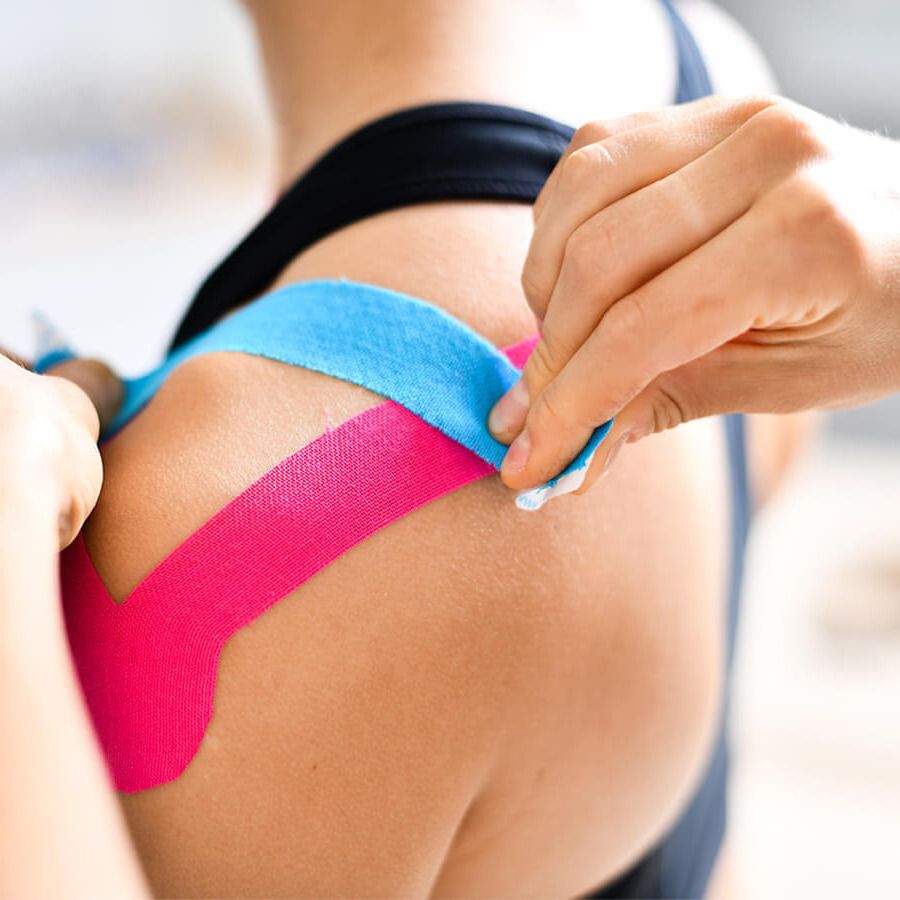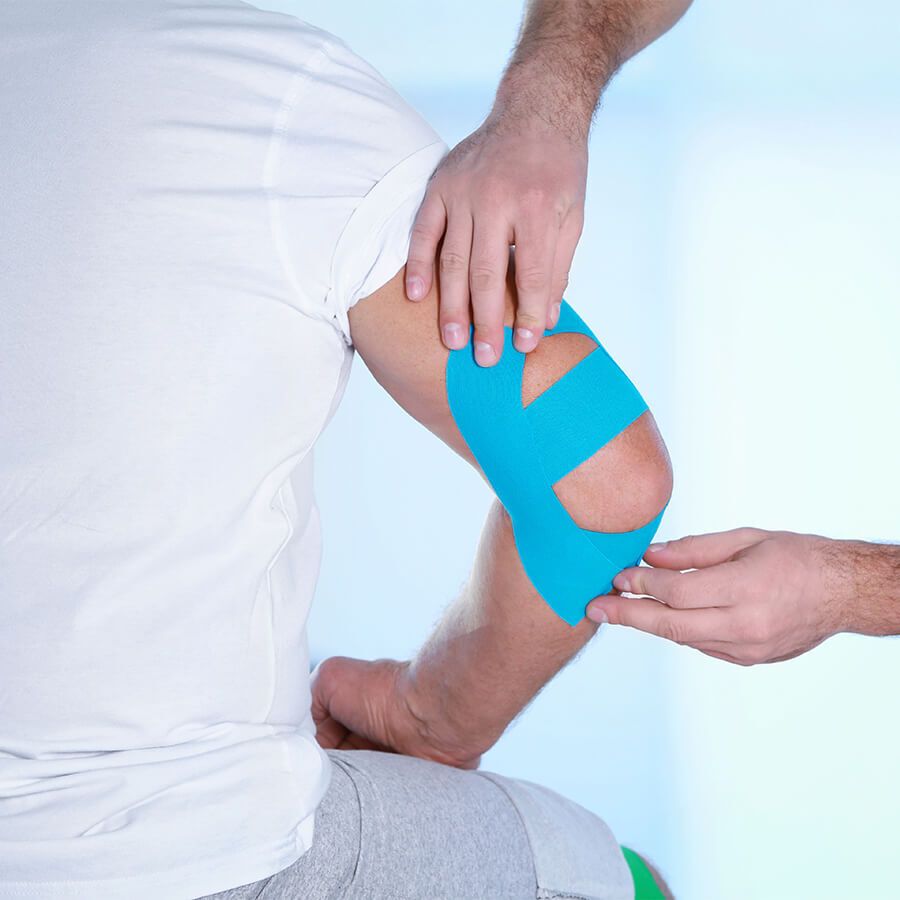How does it work?
Following a manual adjustment by a chiropractor, kinesio taping can improve the benefits by offering extended soft tissue manipulation. It is applied over and around muscles, ligaments, tendons, and other fibrous tissue.
K-tape alleviates pain by microscopically lifting the skin and facilitating decreased inflammation. It mechanically supports joints by mimicking connective tissues. The method and direction in which the tape is applied all vary to achieve desired results. Your chiropractor changes the amount of stretch applied to the tape to influence its effect.
Every patient responds differently to kinesio taping, but taping enhances other healing treatments by increasing blood flow and restoring range of motion.





